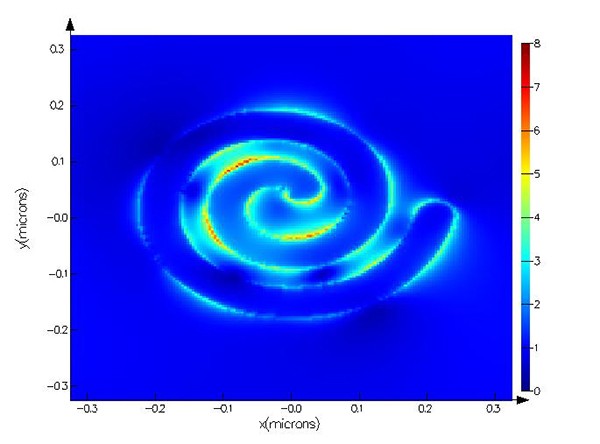Nano-sized swirls of gold that are invisible to the naked eye could be the next tool to provide identity theft protection. The nano spirals printed on cash currency or ID cards would be nearly impossible to counterfeit.
Researchers at Vanderbilt University developed the "Archimedes spirals" in a Washington State physics lab. They then used super-fast "barcode reader" lasers to capture the optical properties of the microscopic whirls.
The researchers' study was published in the May 21 edition of Journal of Nanophotonics.
Roderick Davidson II is a Vanderbilt University PhD student. He developed a new method to study the optical behavior of nano tech spirals.
Scientists can shrink the gold swirls to a size smaller than visible light wavelengths. They reduce a dime-sized spiral about six million times, according to Phys.org.
The spirals then glow blue when infrared light exposes the tiny swirls. This effect is known by physicists as "frequency doubling" 'or "harmonic generation."
Researchers observed a fascinating result when polarized laser light contacted their invention. Different amounts of blue light were emitted as they rotated the angle of the polarization plane.
Richard Haglund, a physics professor, compared the phenomenon to a violin string being bowed quickly. The electron "strings" in the spiral center created blue light with a higher wavelength than infrared light, the "second harmonic."
The spirals are so tiny that a square array of 100 units would have a width of 1/100 mm, and still be invisible to a human eye. However, their "signature" responses are still strong enough for special sensors to detect them and provide identify theft protection.
Besides being tiny, the minute amounts of precious metals used, such as platinum, gold and silver, keep the cost down and resist chemical decay, according to Tech Times. Nano spirals could be printed on materials such as paper or plastic.
Another real-world application would involve compressing the nano spirals. They could then be infused into objects that need accurate tracking, such as chemicals, drugs, or explosives.
The term "Archimedes spiral" refers to the coil that was first studied by Archimedes, a physicist and inventor in Ancient Greece. His academic paper "On Spirals" focused on the structures.



























